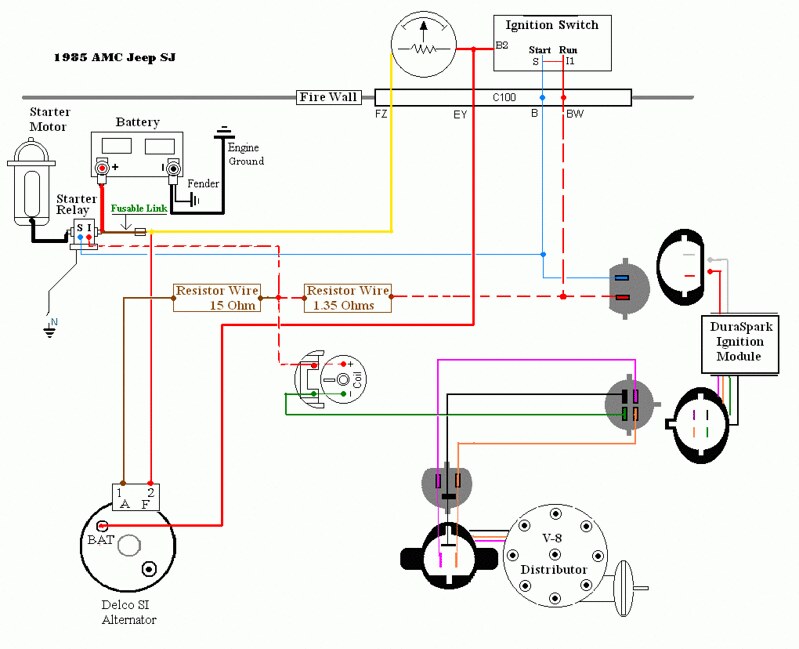MAD Bypass Question
Here's a diagram I recently made for my jeep, which is similar. Even though the connections are not drawn in, the junction between the ammeter and the ignition switch also feeds the headlights, ignition, and everything in the fusebox! So each of the changes you are proposing takes a load off of the connections. You can see that if you weren't adding the direct wire from the alt to the battery, then it's best to hook the headlight system to the alternator output.

It depends on the load. The load in your scenario is the current needed to maintain the battery. Unless your trying to charge a dead battery with the alt or running battery power only, the highest load it normally sees is at start up. For reference, a '67 A-body, the factory wiring was just 12 gage on the alt side and 10 ga on the battery side of the ammeter. These carried almost all the loads placed on the Battery and alternator (almost because starter motor and horns have direct wires).
Everything else is still drawing from the main junction inside. However, with a headlight relay system installed, another big load has been removed from that junction, and therefore the bulkhead.
Here's a diagram I recently made for my jeep, which is similar. Even though the connections are not drawn in, the junction between the ammeter and the ignition switch also feeds the headlights, ignition, and everything in the fusebox! So each of the changes you are proposing takes a load off of the connections. You can see that if you weren't adding the direct wire from the alt to the battery, then it's best to hook the headlight system to the alternator output.
